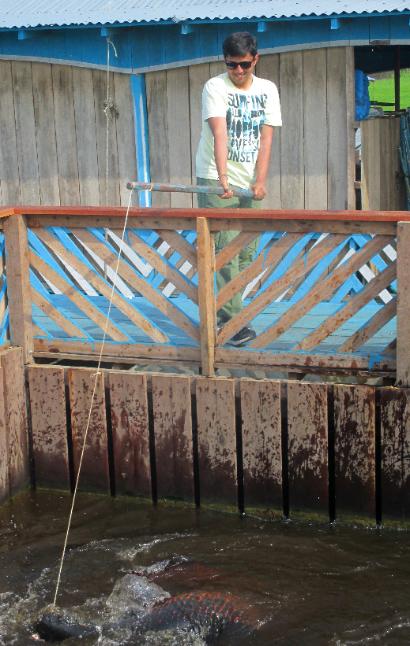
Where We Be
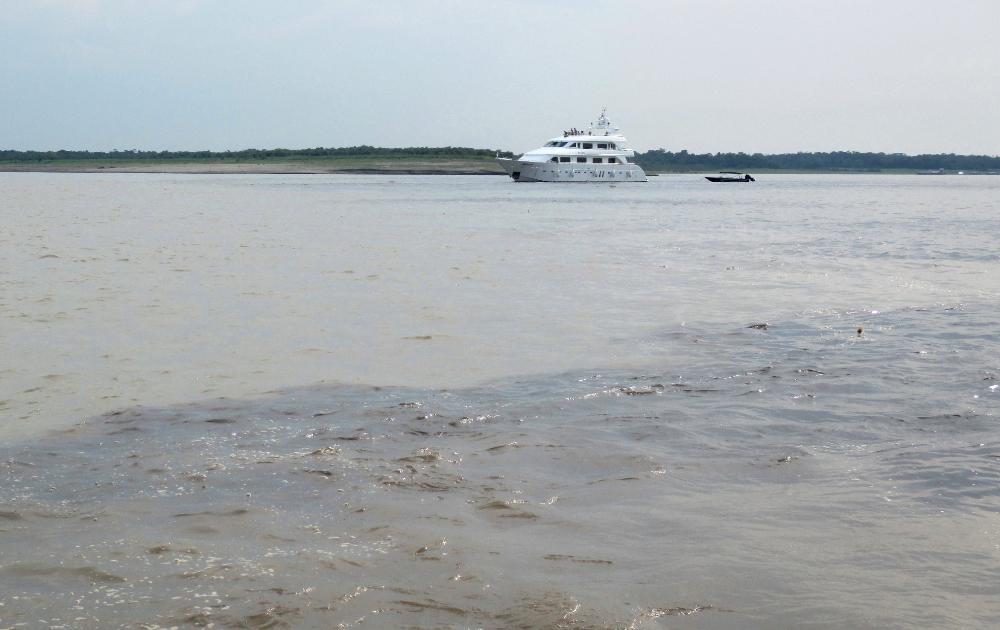

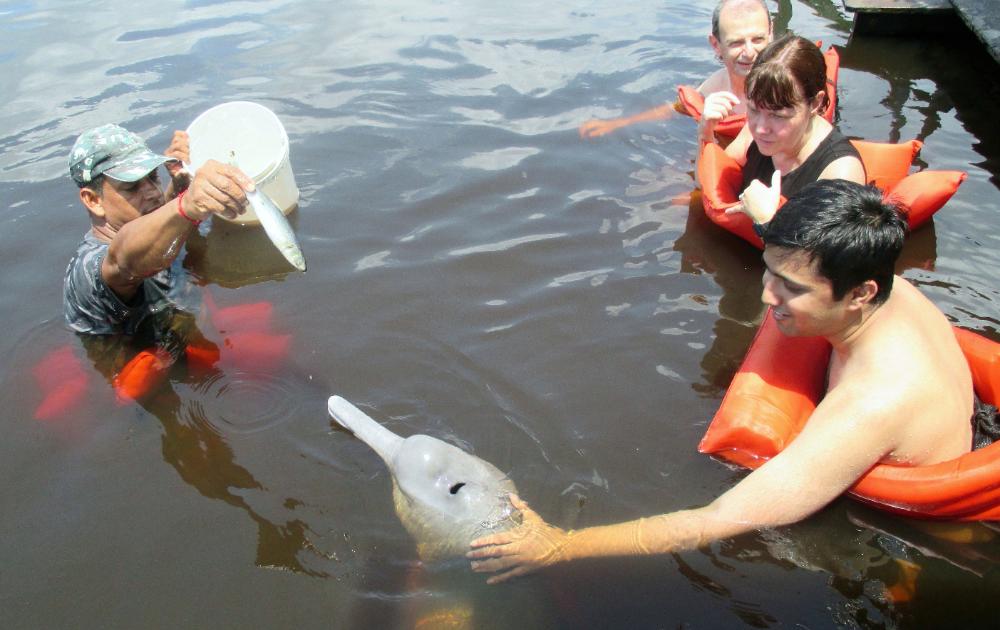
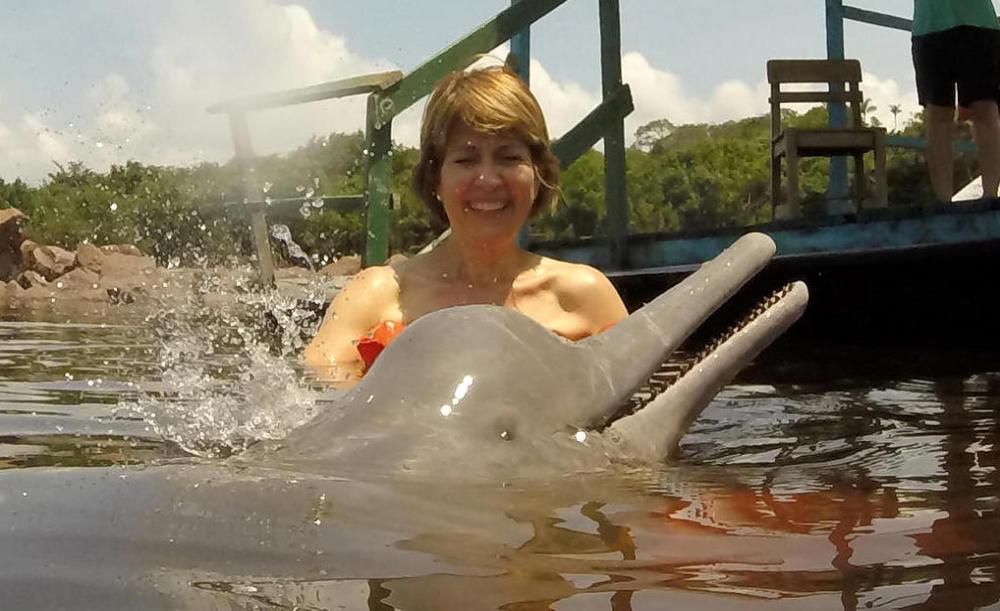
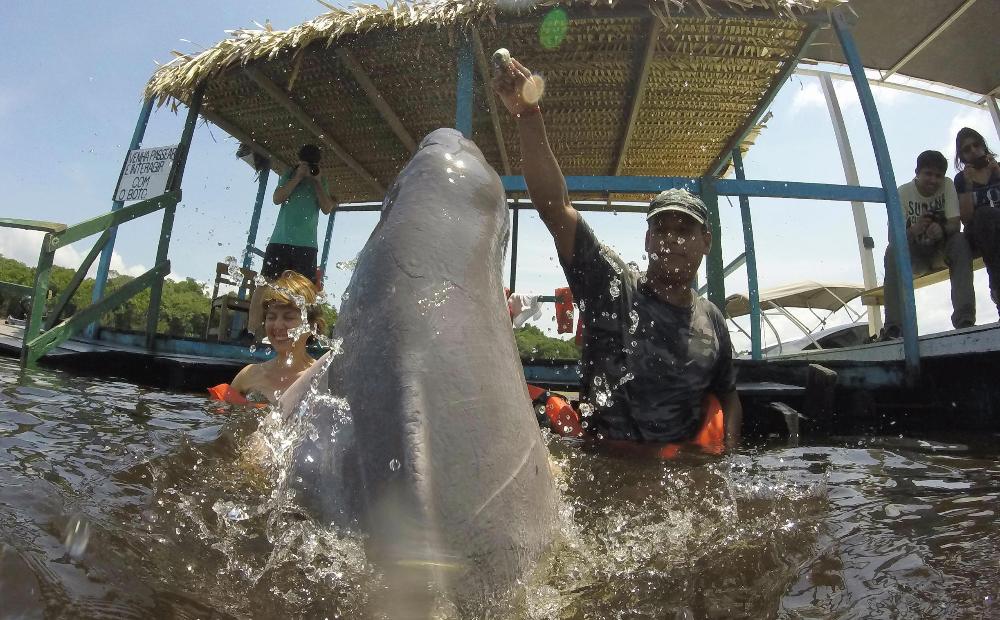
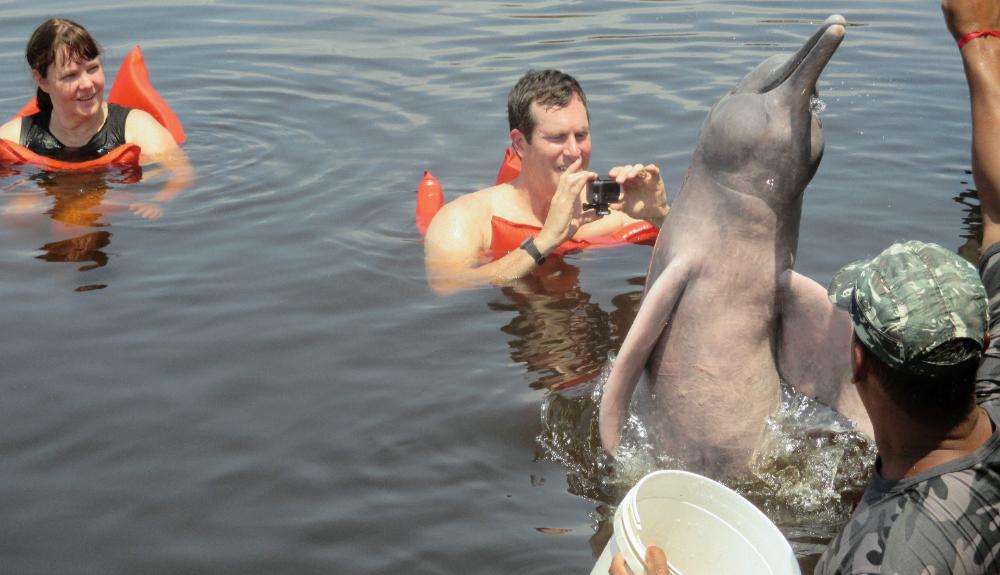
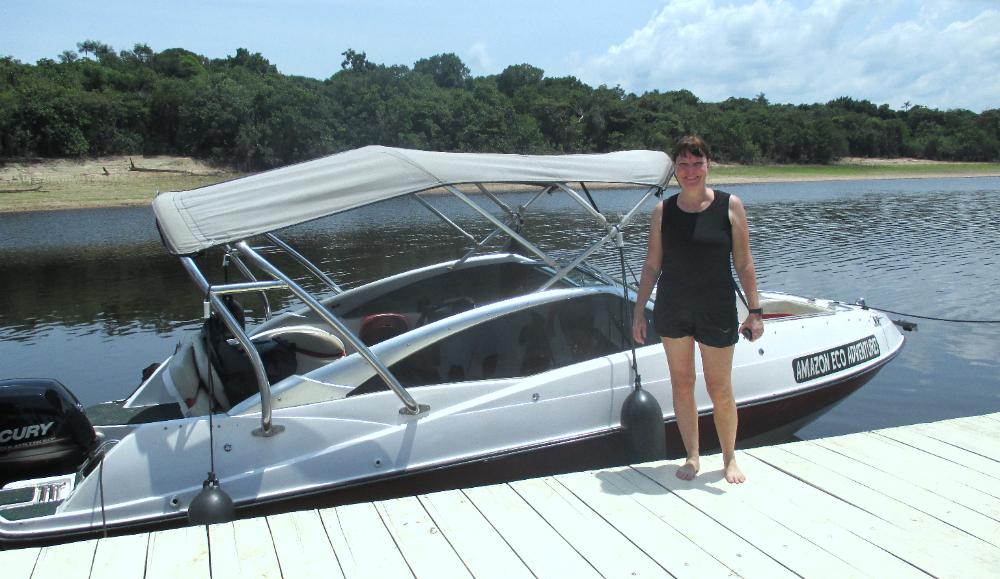
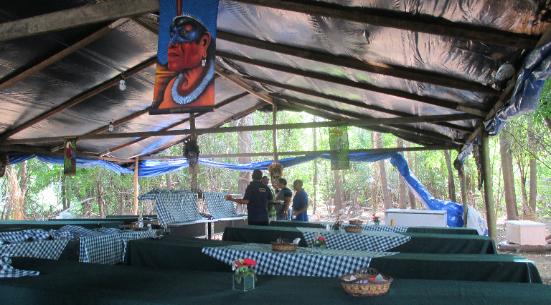
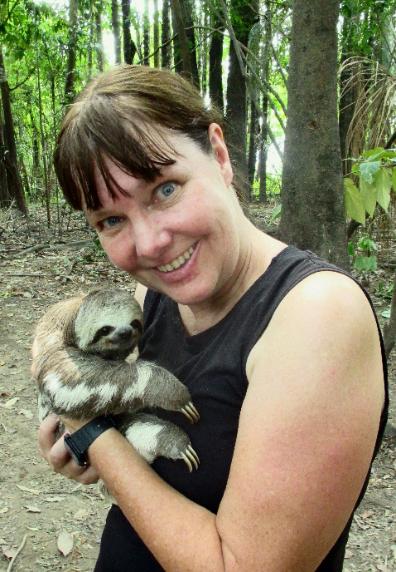
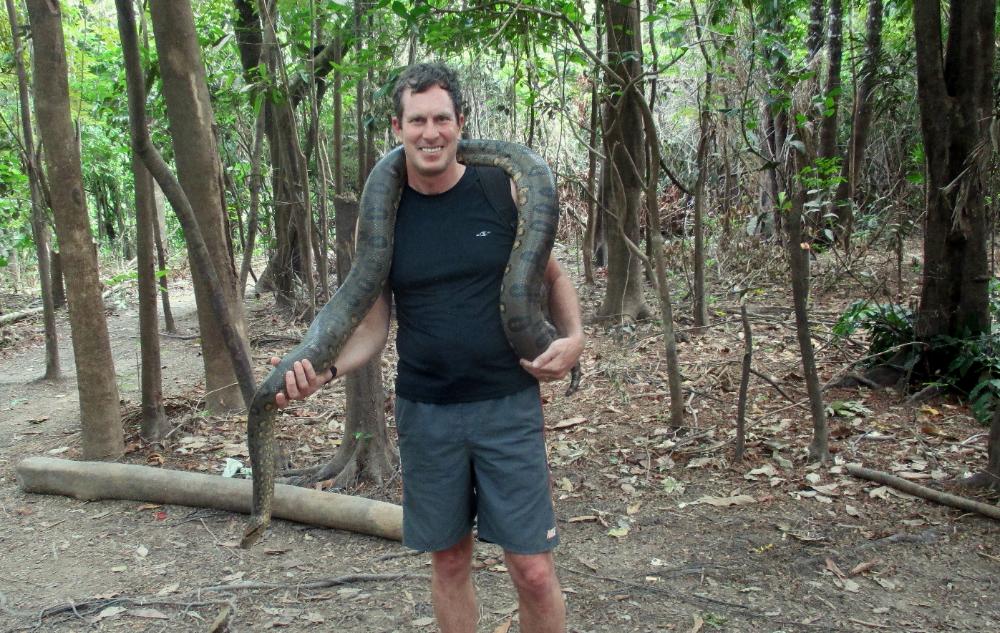
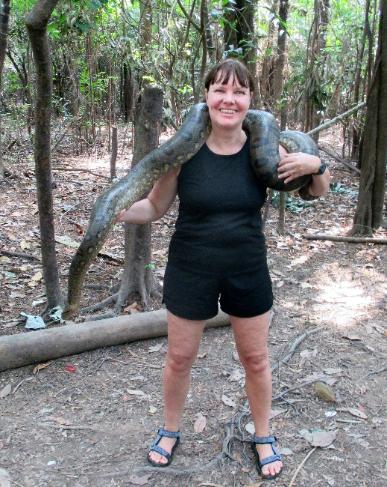
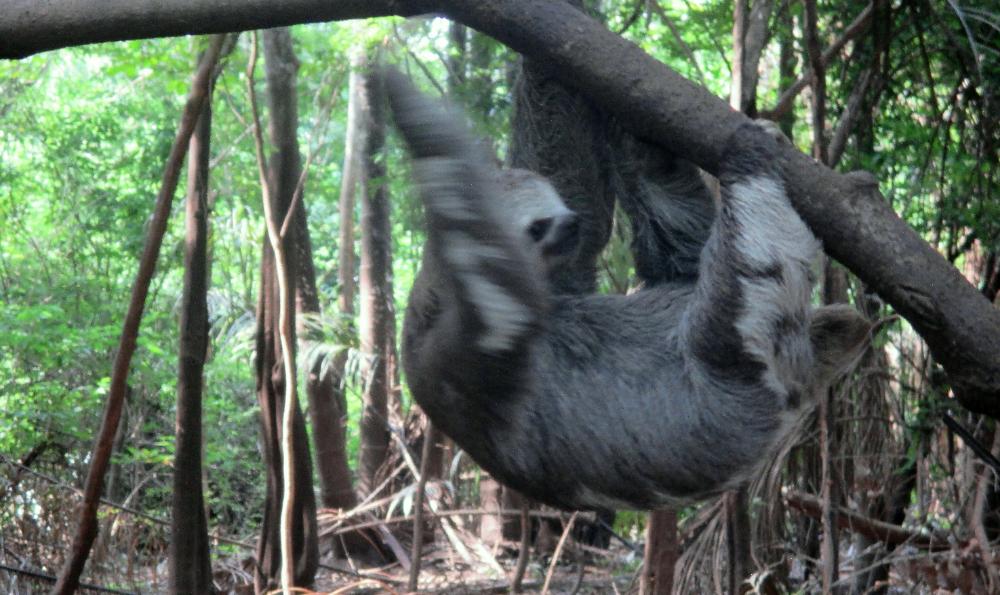
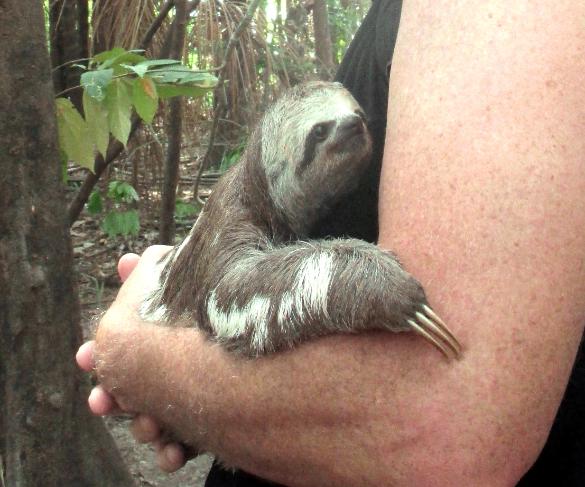
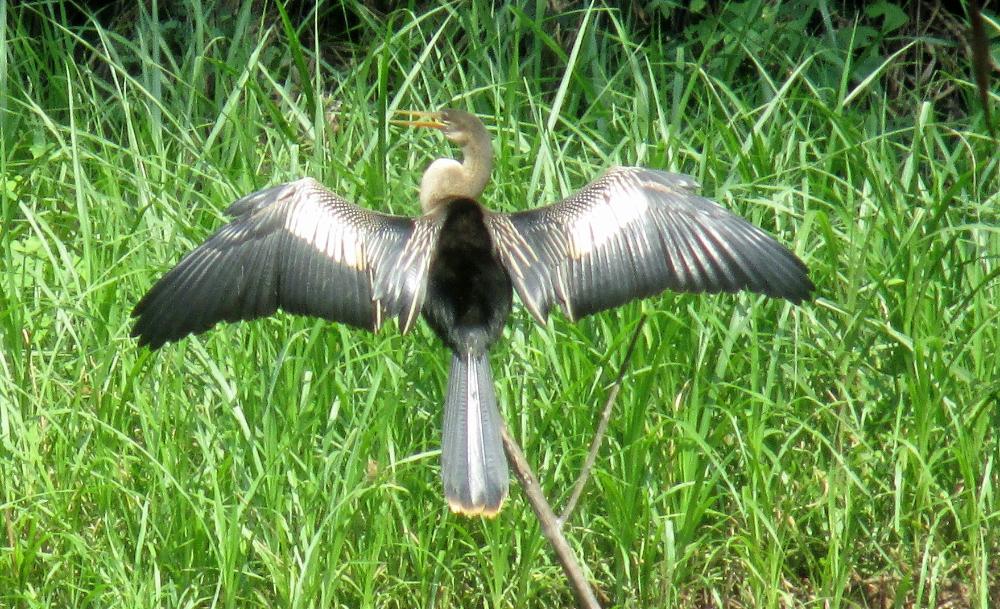
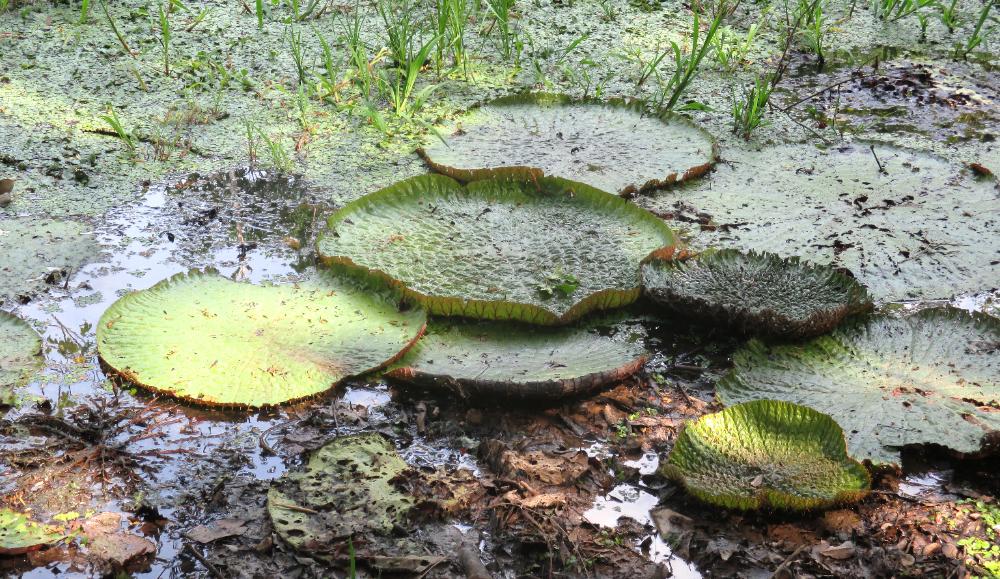
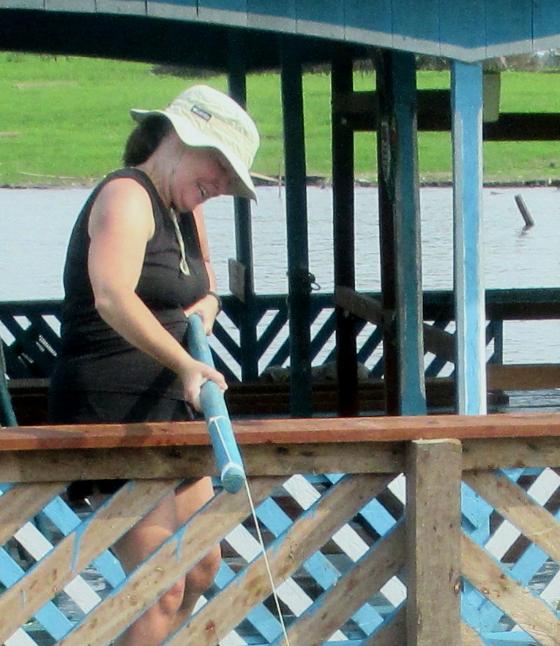
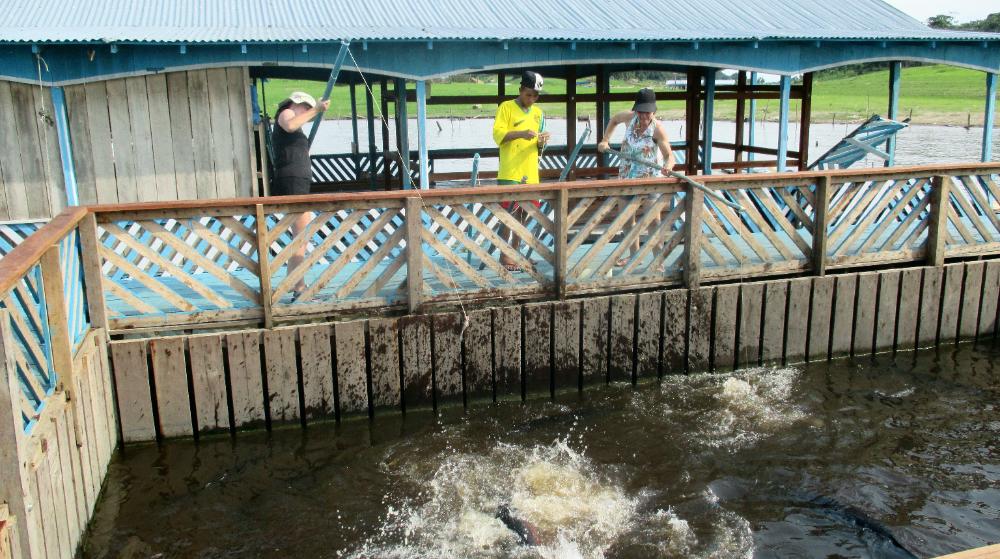
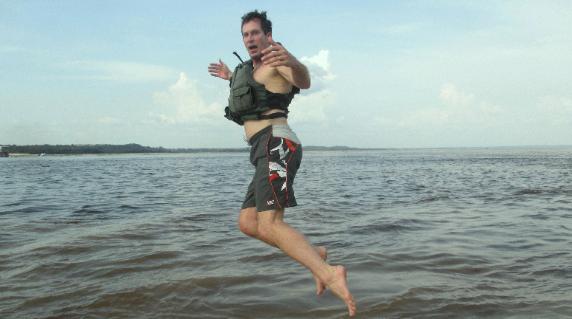
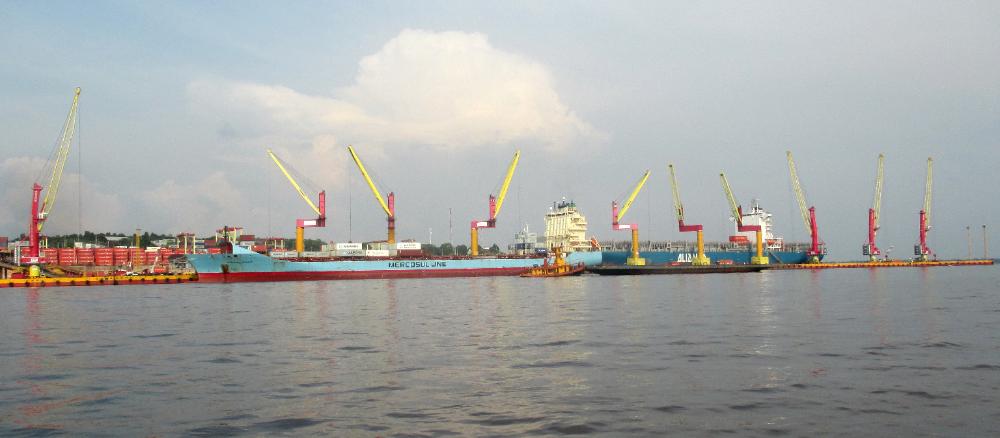
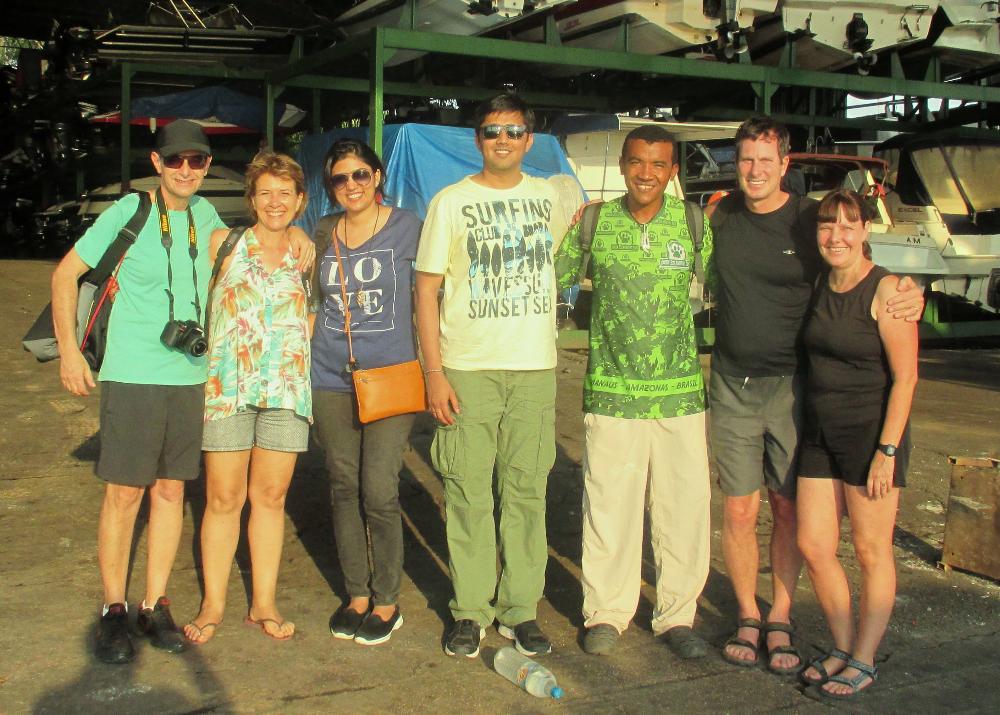
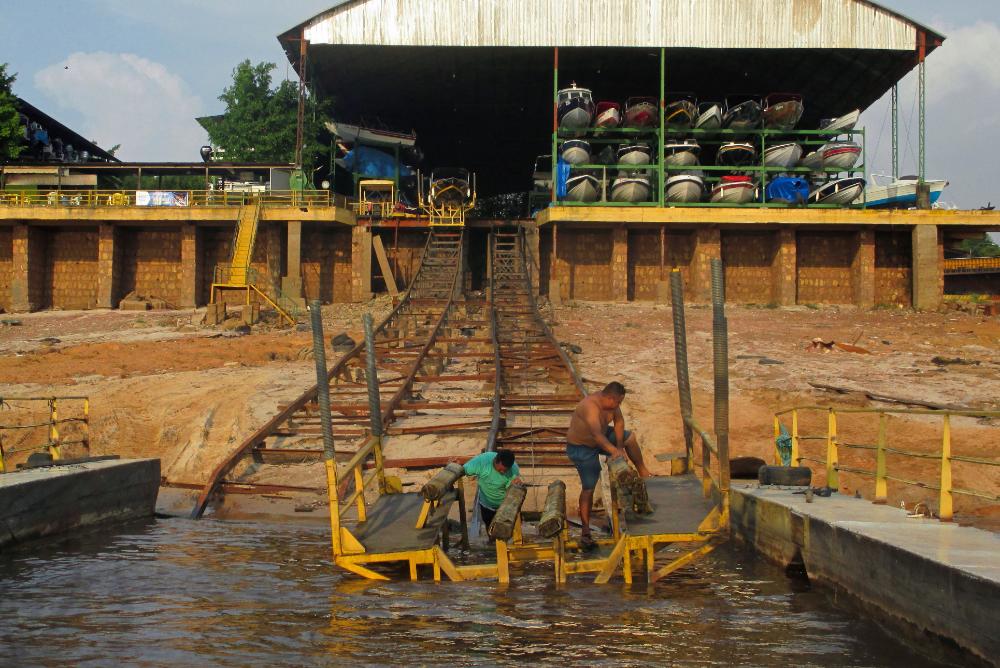
| Amazon River, Brazil |
For our first big day of sightseeing in Brazil we
did an all-day tour with Amazon Eco Adventures.
The price was R$ 350 per person or about $100
each, costly by Brazilian standards, but such an
amazing and all-inclusive experience that we
felt it was worth every penny. What we liked
best was that it let us experience all the high-
lights of the world's largest river in a single day.
In the morning we visited an indigenous village
and swam with pink river dolphins. After lunch
(included), we went on a jungle walk and got to
hold an anaconda, caiman, and sloth, fished for
enormous pirarucu, and visited the "Meeting of
the Waters" where the dark waters of the Rio
Negro and the light waters of the Rio Solimoes
meet to form the Amazon. The two rivers run
side by side and don’t mix for several miles due
to differences in temperature, acidity, density,
and speed of flow. I remarked to our guide that
it would be fun to get in the water and actually
feel the difference in temperature between the
two and he said, “Why don’t you do it?” So I did!
did an all-day tour with Amazon Eco Adventures.
The price was R$ 350 per person or about $100
each, costly by Brazilian standards, but such an
amazing and all-inclusive experience that we
felt it was worth every penny. What we liked
best was that it let us experience all the high-
lights of the world's largest river in a single day.
In the morning we visited an indigenous village
and swam with pink river dolphins. After lunch
(included), we went on a jungle walk and got to
hold an anaconda, caiman, and sloth, fished for
enormous pirarucu, and visited the "Meeting of
the Waters" where the dark waters of the Rio
Negro and the light waters of the Rio Solimoes
meet to form the Amazon. The two rivers run
side by side and don’t mix for several miles due
to differences in temperature, acidity, density,
and speed of flow. I remarked to our guide that
it would be fun to get in the water and actually
feel the difference in temperature between the
two and he said, “Why don’t you do it?” So I did!
| This was our first chance to try out our new Go Pro videocamera -- perfect for the water |
| Next up was swimming with pink river dolphins in a protected cove connected to the wider river. The dolphins are completely free to come and go but are enticed by the free fish on offer. |
| We were allowed to touch them as long as we avoided the blowhole, eyes, and snout. They feel incredibly muscular under their rubber-like skin. |
| It's pretty amazing to feel them thrust upwards with their powerful bodies towards a fish |
| We enjoyed getting to meet these handsome, dignified people who seem intent on keeping their cultural traditions alive |
| We climbed steep wooden steps up to the village itself, where there was another pavilion and a series of simple huts |
| We were led to this big thatched pavilion |
| The music included pan flutes, foot-stomping seashell ankle percussion, and didgeridoo-like instruments that made for quite a range of sound |
| Inside we were treated to a series of traditional dances. We even got to join in the last dance. |
| The village is located in a scenic spot along the river. Interestingly, there are almost no mosquitoes here as the waters of the Rio Negro are acidic and keep most of the bugs away. |
| Heading north up the Rio Negro, our first stop was an indigenous village on the eastern bank. We were met by indians in full garb – headdresses, necklaces, and intricate tattoos on the legs. |
| Even in the dry season the Amazon is plenty wide -- it looks more like a lake than a river! This cable suspension bridge connects Manaus (to the left) with other communities and ecolodges on the far bank. |
| Our boat entered the water on this funky rail contraption. In mid-November we were at the very tail end of the dry season, with flooding rains due in another two weeks. At that point the river rises to the top of the rails. |
| A definite highlight of our Amazon adventure was getting to swim with pink river dolphins |
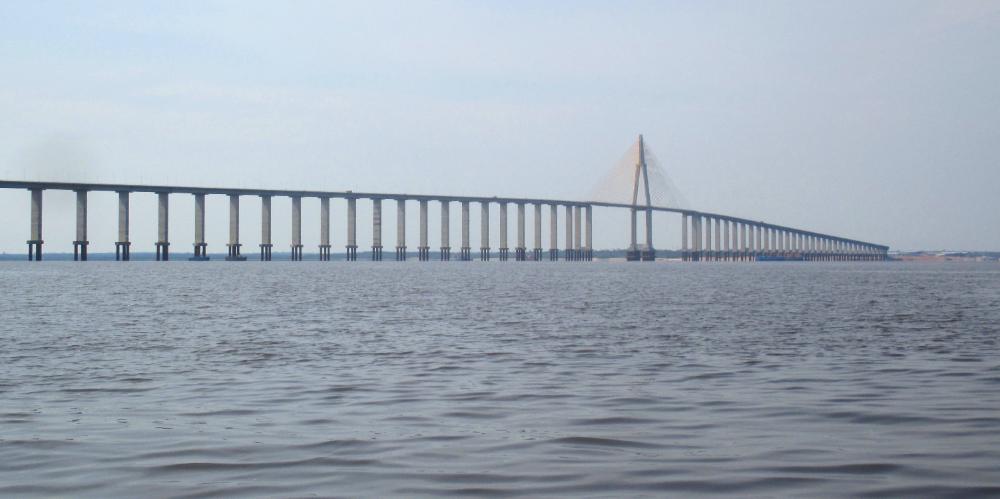
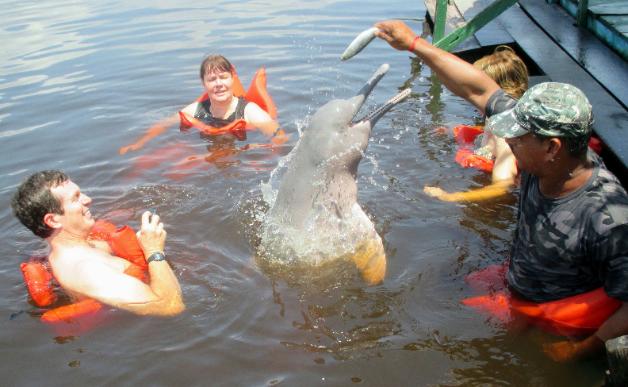
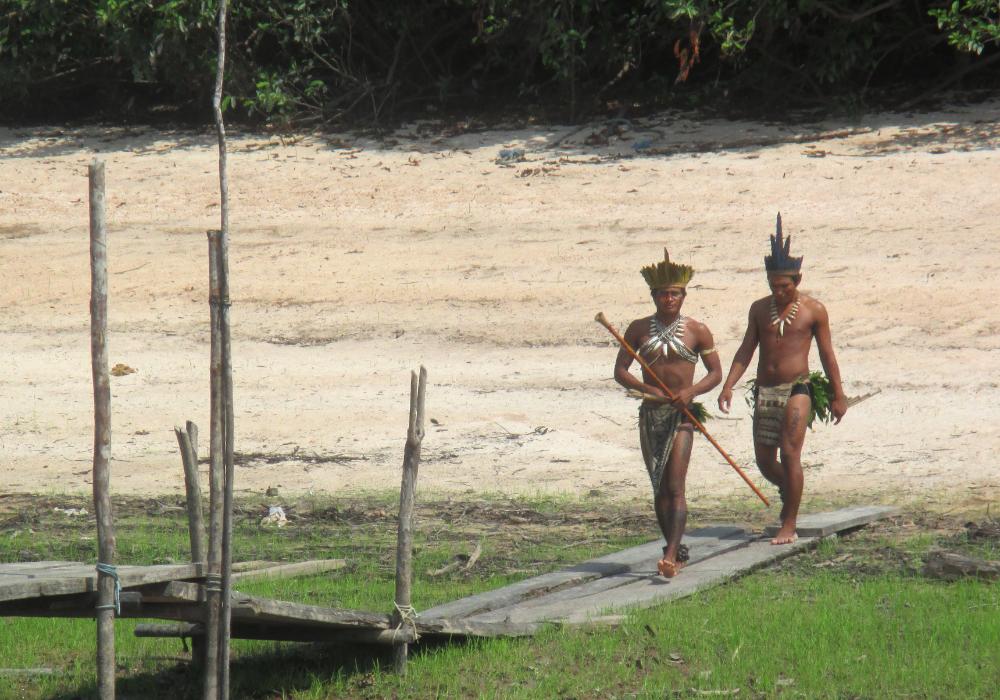
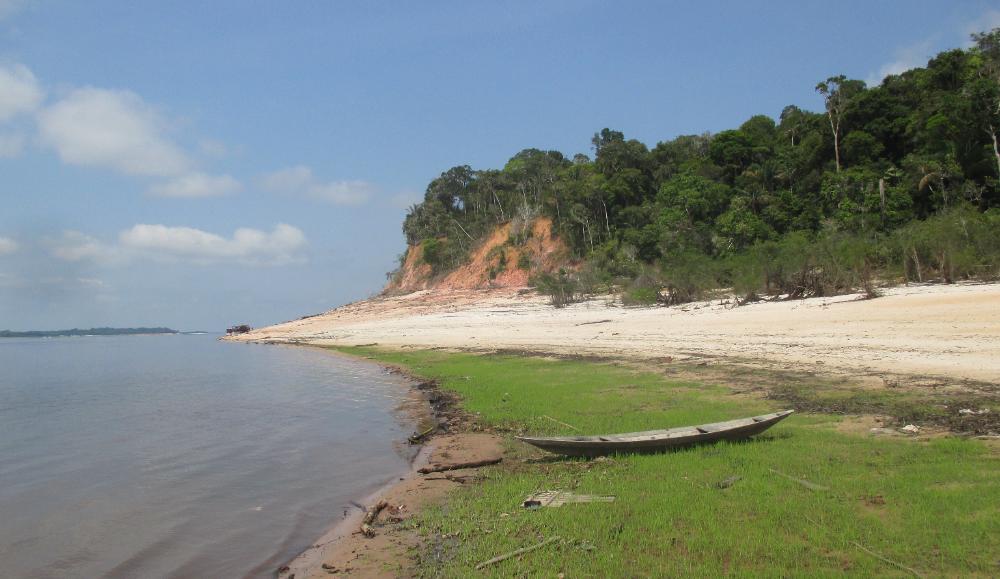
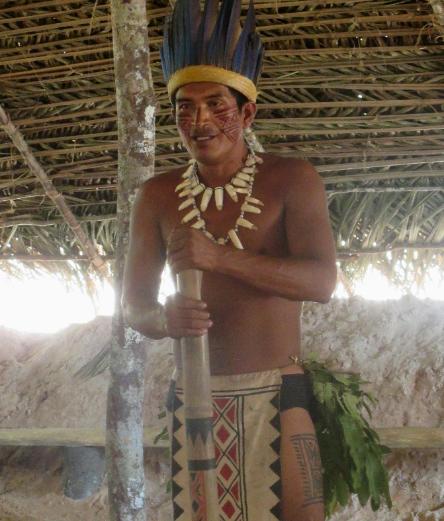
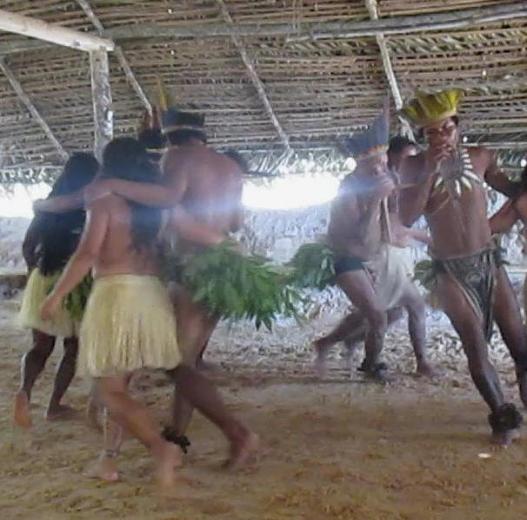
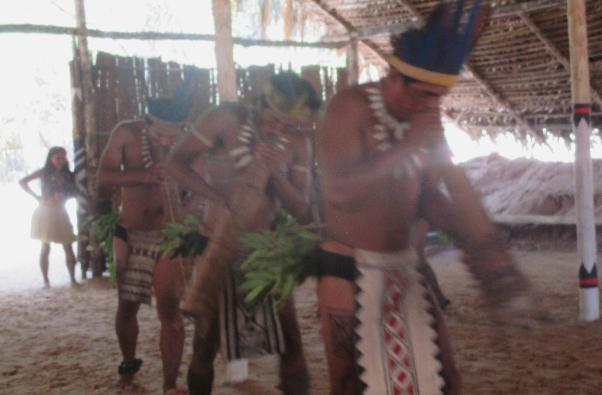
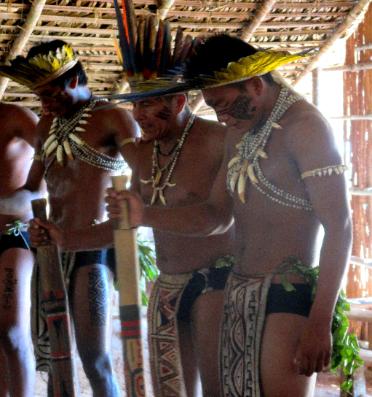
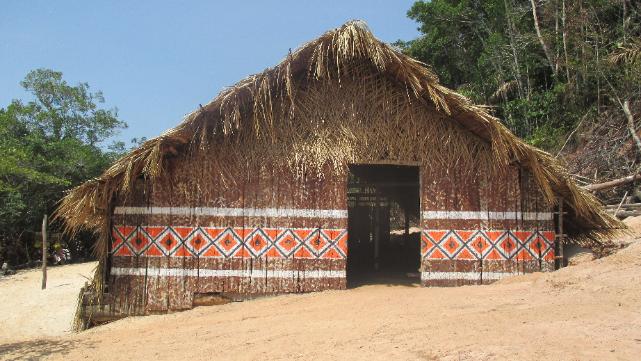
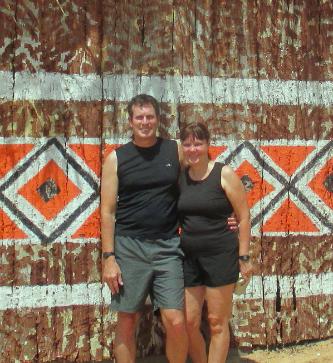
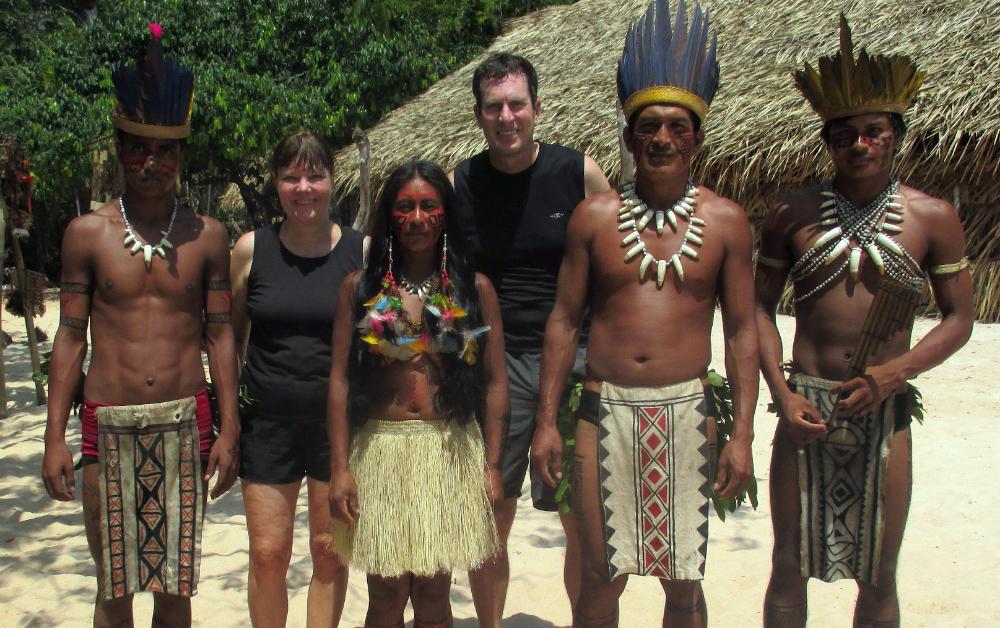
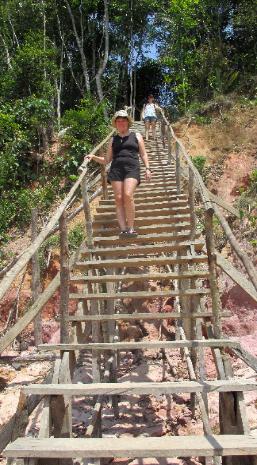
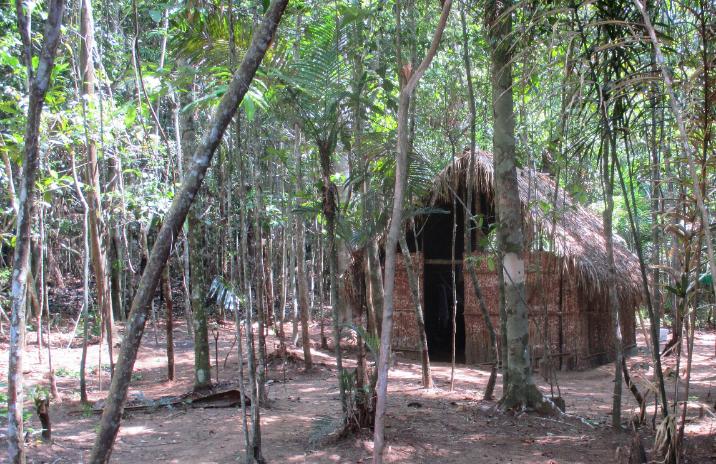
| The buffet style lunch included shrimp, steak, pirarucu (fish), and a traditional Brazilian side dish called farofa which translates as “crumbs” and is made from yucca. It’s golden, dry, toasty, buttery, and a little crunchy all at the same time. |
| A short walk through the jungle brought us to a glade where three indigenous animals were awaiting us: a huge anaconda, an adolescent caiman (alligator), and an adorable tree sloth. We got to hold all three! |
| Okay, so it was hardly an authentic jungle moment! But being so close to the animals was certainly real – and undeniably fun. The anaconda was heavy like a backpack when its handler put it around my shoulders. |
| Robin's turn! |
| We enjoyed watching the sloth climbing slow-motion upside-down along a branch |
| We did see a few truly wild animals during our walk, like this anhinga (snake bird) with its wings outstretched |
| Victoria Lilies are the largest water lilies in the world. The biggest can hold the weight of a small person! Unfortunately these were dessicated and out of season. |
| Next up: fishing for pirarucu, some of the largest freshwater fish in the world. Our fishing expedition was quite artificial as we were fishing in an enclosed pen at a fish farm. |
| Our chariot awaits! This Fokker speedboat allowed us to explore more of the river than you typically could in a single day -- so we got to swim with river dolphins to the north of Manaus AND see the "Meeting of the Waters" to the south. |
| Our guide gave me the thumbs up to jump into the water so I did! You really could feel a dramatic temperature differential between the warm Negro and cool Solimoes. |
| Our final stop was the Meeting of the Waters, where the Rio Negro and Rio Solimoes meet and form the Amazon. Amazingly the two rivers run side by side and don’t mix for several miles. What looks like an oil slick above is actually the darker waters of the Negro flowing next to the lighter waters of the Solimoes. |
| As we returned to Manaus we passed these huge cranes used for loading and unloading cargo vessels -- a reminder of how vital the Amazon continues to be for transit and commerce. |
| We finished up an awesome day with a group picture at sunset. That's Milton, our outstanding guide, in the foliage-green shirt. |
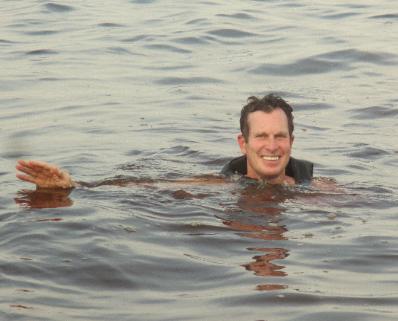
| Still, that didn't take away from the visceral excitement of dropping your line in and watching the pirarucu battle, thrash, snap, and fight for the morsel. There was no hook on the line so we were really more feeding the pirarucu than fishing for them! And if you could pull one out of the water you could keep it! |
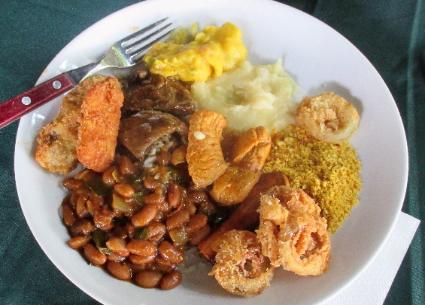
| The sloth was irresistible with its cute face and long toenails |
